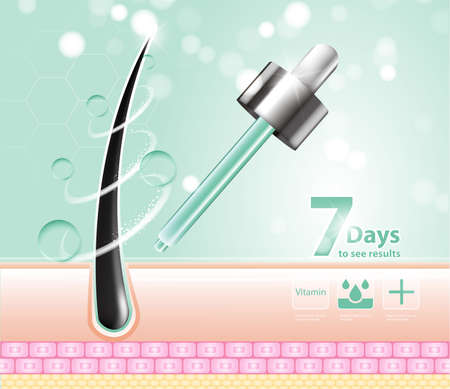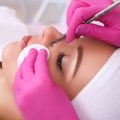Introduction: The Real Story Behind Dark Circles
If you’ve ever looked in the mirror and spotted dark circles under your eyes, you’re definitely not alone. In the U.S., it seems like almost everyone—from busy parents and college students to professionals burning the midnight oil—wrestles with this issue at some point. Despite being so common, there’s a lot of confusion about why these pesky shadows show up and what actually works to get rid of them. Some people blame lack of sleep, while others swear it’s all about genetics or stress. But are those really the main culprits? Before we jump into debunking the biggest myths, let’s take a closer look at why dark circles are such a universal concern for Americans. Whether it’s because of our fast-paced lifestyles, endless screen time, or just plain old heredity, understanding the real story behind dark circles is the first step toward finding solutions that truly work.
Myth-Busting: What Actually Causes Dark Circles?
When it comes to dark circles, misinformation runs rampant—especially on social media. Let’s break down the biggest myths and get real about what’s actually causing those shadows under your eyes for so many Americans.
Common Myths vs. Reality
| Myth | Reality |
|---|---|
| Lack of sleep is the only cause. | While not sleeping enough makes them worse, genetics, allergies, and even lifestyle habits play a bigger role for many people in the U.S. |
| Dark circles are only from tiredness. | They can also be caused by thinning skin, loss of fat and collagen with age, or increased pigmentation—none of which have anything to do with fatigue. |
| Only older adults get dark circles. | Kids, teens, and young adults can all develop dark circles due to hereditary factors or allergies. |
| Sunscreen doesn’t matter for under eyes. | Sun exposure actually makes pigmentation worse—many dermatologists say SPF under the eyes is essential. |
What Really Drives Dark Circles in America?
- Genetics: If your parents have them, there’s a good chance you will too. This is especially true for people with fair or thin skin.
- Allergies: Common American allergens like pollen, pet dander, and dust mites lead to inflammation and rubbing that make circles darker and more noticeable.
- Lifestyle Habits: Late-night screen time, high-stress jobs, or excessive caffeine intake (hello, coffee culture!) can all add up—even if you think you’re getting enough rest.
- Pigmentation: People of color often deal with hyperpigmentation around their eyes due to genetics or sun exposure.
- Aging: As collagen breaks down with age, blood vessels become more visible through thinner skin—this happens to everyone eventually, not just seniors!
The Takeaway for Real-Life Americans
If you’re frustrated because “just getting more sleep” isn’t helping your dark circles, you’re definitely not alone. Understanding these real causes—and ignoring outdated myths—puts you in a much better position to find solutions that actually work for your lifestyle and skin type.

3. Trending Treatments: What Americans Are Really Using
If you’ve scrolled through TikTok, Instagram, or beauty blogs lately, you know that dark circle remedies are a big deal in the U.S.—and everyone seems to have a “miracle fix.” But what are Americans actually reaching for? Let’s break it down. On the shelves at every drugstore, you’ll spot classic eye creams loaded with caffeine, vitamin C, and hyaluronic acid. These promise to brighten and hydrate, but real-world reviews say results are subtle and usually short-term—think of them as a quick pick-me-up rather than a cure.
For those willing to spend more, high-end serums and under-eye masks (hello, gold-infused patches!) are all over social media. They look fancy and feel luxurious, but many consumers report that while they may temporarily reduce puffiness or make skin feel smoother, they don’t erase deep circles overnight. The real buzz lately is about clinical treatments: laser therapy, fillers (especially hyaluronic acid fillers), and microneedling. Dermatologists in the U.S. say these options can make a visible difference, especially when genetics or bone structure play a role in your under-eye shadows.
But here’s the consumer truth—these treatments come with a hefty price tag and aren’t risk-free. Reviews on forums like Reddit and RealSelf often highlight mixed results: some people rave about their bright new look, while others see minimal change for the cost. Americans are also big fans of makeup hacks—full-coverage concealers remain a go-to daily solution for many who want instant camouflage without commitment or downtime.
4. What Really Works: Science-Backed Solutions
Let’s get real—when it comes to dark circles, not every viral hack or “miracle” cream you see on TikTok is worth your time (or money). So, what actually delivers results according to dermatologists in the U.S.? Here’s a rundown of proven solutions and top-rated products available stateside, so you don’t waste another dollar chasing empty promises.
Proven Methods for Treating Dark Circles
| Treatment Type | How It Works | Recommended For | Dermatologist Notes |
|---|---|---|---|
| Topical Retinoids | Boosts collagen production, improves skin texture and thickness | Thin skin, visible blood vessels under eyes | Start slowly; may cause irritation if overused |
| Vitamin C Serums | Brightens skin, reduces pigmentation, offers antioxidant protection | Pigmentation-based dark circles | Look for stable forms like L-ascorbic acid; use sunscreen daily |
| Caffeine Eye Creams | Reduces puffiness by constricting blood vessels; temporarily brightens under-eye area | Mild swelling, tired-looking eyes | Great for quick fixes but not a long-term solution |
| Hyaluronic Acid Fillers (Professional) | Adds volume to sunken areas, minimizes shadowing effects | Genetic hollowing or tear troughs | Should be administered by board-certified dermatologists only |
| Chemical Peels & Lasers (Professional) | Targets pigmentation and stimulates collagen production for smoother texture and tone | Stubborn pigmentation or texture issues | Consult with a dermatologist for safety and suitability for your skin type |
Top Dermatologist-Recommended Products in the U.S.
- CeraVe Eye Repair Cream: Affordable and packed with ceramides and hyaluronic acid for hydration.
- Skinceuticals AOX+ Eye Gel: Contains antioxidants like vitamin C and ferulic acid to fight environmental damage.
- The Ordinary Caffeine Solution 5% + EGCG: A cult favorite for quick de-puffing on a budget.
- Neutrogena Rapid Wrinkle Repair Eye Cream: Contains retinol SA, one of the most effective over-the-counter options for boosting collagen under the eyes.
- Lumify Redness Reliever Eye Drops: Not a treatment for circles themselves but great for making eyes look brighter and more awake in minutes—perfect before a big meeting or night out!
Your Takeaway as a Consumer
If you’re feeling overwhelmed by choices at Target or Sephora, remember: stick to products with proven ingredients like retinoids, vitamin C, caffeine, and hyaluronic acid. And if you want lasting results or have deep-set concerns, consult a board-certified dermatologist before considering professional procedures. Don’t fall for instant-fix myths—invest in solutions that are backed by science and trusted by U.S. experts.
5. Home Hacks: Everyday Tips You’ll Actually Use
Let’s be honest—most of us don’t have the time or budget for fancy spa treatments, but that doesn’t mean you’re stuck with dark circles. Here are some practical and wallet-friendly hacks that fit right into the American lifestyle:
Cold Spoons & Cucumber Slices
This classic trick isn’t just for movies. Pop a couple of metal spoons in the freezer and place them on your eyes for a few minutes in the morning. The cold helps constrict blood vessels and reduces puffiness. Cucumbers work similarly, plus they feel refreshing after a long day.
Hydration is Key
It sounds basic, but staying hydrated makes a noticeable difference. Americans love their coffee, but swapping out one cup for a glass of water can help plump up your under-eye area and reduce that tired look.
Sleep Smarter
We know getting eight hours every night isn’t always realistic, but try propping up your head with an extra pillow. This small change prevents fluid from pooling under your eyes—a simple shift with big results.
DIY Eye Masks
If you’re into natural remedies, mix a little brewed (and cooled) green tea with cotton pads and leave them on your eyes for 10-15 minutes. The caffeine and antioxidants can help brighten those stubborn circles, and it’s easy to fit into your Netflix binge routine.
Don’t Forget Sunscreen
A quick reminder—always dab some sunscreen around your eyes before heading out. Even in the States where everyone’s busy, this step protects against sun damage, which can make dark circles worse over time.
Bottom Line:
You don’t need expensive products or complicated routines. With these simple home hacks, brighter under-eyes are totally doable—even on a Monday morning before your first cup of coffee.
6. Red Flags: What to Avoid (and Why)
If you’ve ever fallen for a viral TikTok hack or splurged on an “overnight miracle” cream, you’re definitely not alone. The beauty industry is packed with products and trends that claim to erase dark circles instantly, but the truth is—many of them are more hype than help. Let’s call out some of the most common gimmicks and explain why you should save your money (and protect your skin).
Trendy Ingredients With Little Science
Charcoal eye masks, gold-infused creams, and caffeine rollers sound fancy and look great on social media. But when you dig into the research, most of these ingredients have minimal real-world impact on dark circles. Don’t let shiny packaging or influencer endorsements fool you—always check for peer-reviewed studies or dermatologist approval.
DIY Solutions That Can Backfire
We’ve all seen those viral home remedies: rubbing lemon juice under your eyes, applying toothpaste, or using raw potatoes as patches. These might be cheap, but they can irritate your delicate under-eye area or even cause allergic reactions. When it comes to skincare, “natural” isn’t always better—or safer.
Over-Promising Products
Beware of brands that promise dramatic results in days or guarantee to “erase” dark circles forever. No topical product can change your genetics or completely eliminate pigmentation overnight. These bold claims are classic red flags for marketing over science.
The Takeaway
As a consumer, it’s easy to get swept up by trends and clever advertising. But when it comes to treating dark circles, stick with what’s proven—and ignore the noise. Look for evidence-based solutions and always do a patch test before trying something new around your eyes. Your wallet and your skin will thank you.
7. Conclusion: Taking Control of Your Dark Circles Journey
If there’s one thing we hope you take away from busting the myths about dark circles, it’s this: you’re not alone, and there are no magic solutions. The beauty industry loves to sell miracle creams and one-size-fits-all answers, but real results come from understanding what’s actually causing your dark circles—whether it’s genetics, lifestyle, or underlying health issues. Topical products can help with hydration or puffiness, but don’t expect them to erase hereditary shadows overnight. Instead, focus on holistic self-care: get enough sleep, manage allergies, use sunscreen religiously, and don’t underestimate the power of a good concealer for those days you need an instant boost. Above all, make choices based on facts, not hype or unrealistic social media trends. Embrace realistic expectations and remember that everyone’s skin journey is different. By staying informed and listening to your own body, you’ll be empowered to take charge of your dark circles in a way that works for you—and that’s what really counts.


